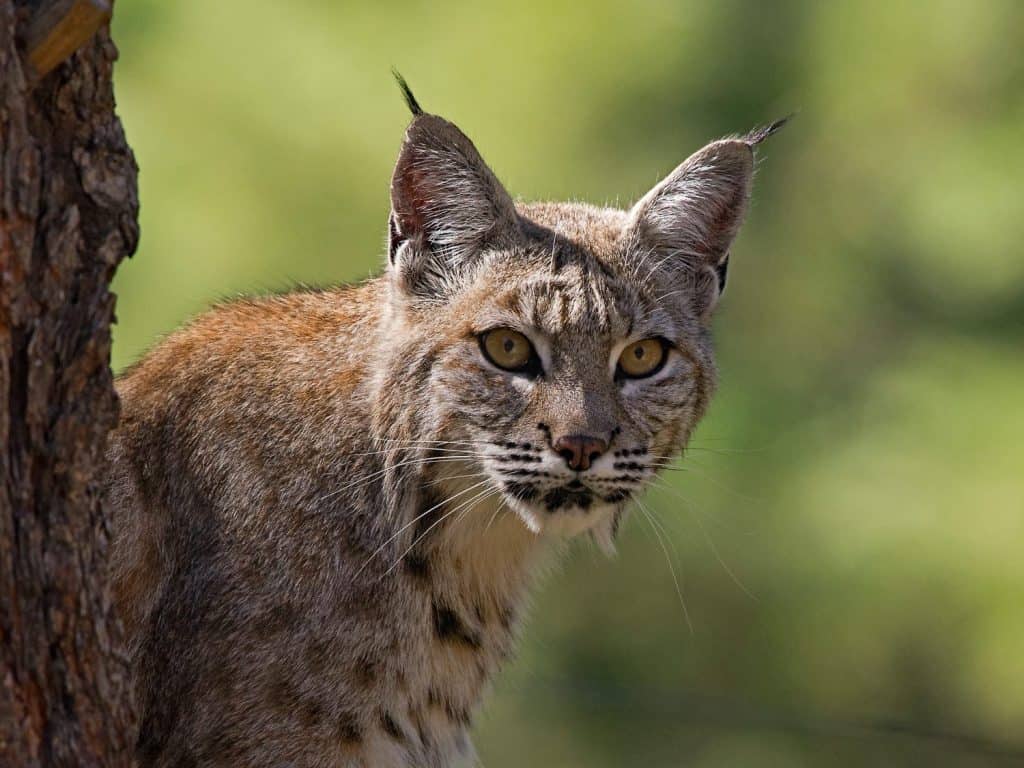
The post A Complete Animal Guide to Ohio’s Hocking Hills State Park appeared first on A-Z Animals.
Hocking Hills State Park is a popular destination in Ohio, attracting anywhere from 4-5 million visitors annually. As was the case with many parks, it saw a boom in tourism following the COVID-19 pandemic. Since then, crowds have been flocking to one of Ohio’s most picturesque landscapes, and not just to hike. Hocking Hills State Park is also home to a wide range of wildlife, attracting birders and animal lovers.
The park is home to several hikes ranging from easy to expert, as well as cave systems, waterfalls, and scenic overlooks. There’s something for everyone, which is how this park became so popular in the first place. For those seeking more fauna than flora, here’s the wildlife you can expect to observe during your trip.
Bobcats

For their small size, bobcats are skilled and stealthy predators.
©Laurie E Wilson/Shutterstock.com
Hocking Hills State Park, located just 50 miles outside the city of Columbus, offers a diverse array of animals, including predators. Bobcats are rarely seen by visitors, but are known to traverse the park’s landscape in search of food. They’re more likely to avoid human interaction and tend to be more active between dusk and dawn. Bobcats prey on small mammals, such as squirrels and rabbits, that inhabit the park. With few natural predators of their own, bobcats are typically unafraid of Ohio’s other native wildlife.
Black Bears
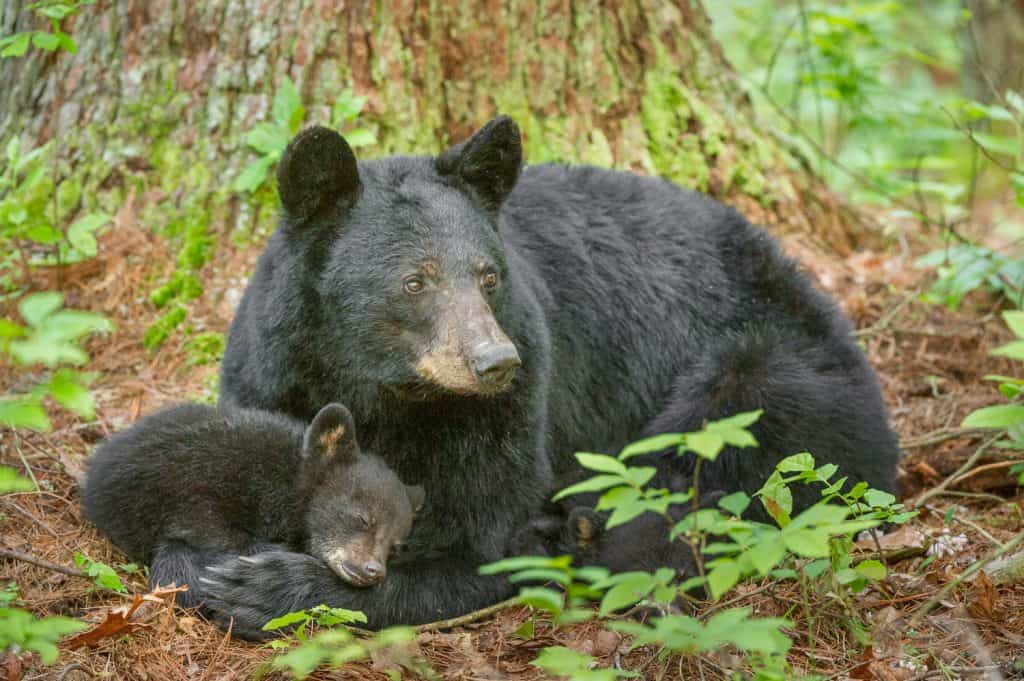
A sow can become aggressive when protecting her cubs.
©Project Coyote
Black bears are typically more afraid of humans than we are of them. Despite its reputation, this species is skittish and more fearful than naturally aggressive. Black bears can bluff or attack when they feel threatened. If a black bear sow is protecting her cubs, she’s more likely to fight to protect her young. However, it’s rare for hikers to encounter black bears in Ohio parks, and there has only been one recent bear attack on record. This incident was not park-related and involved a captive animal. The attack was due to human error rather than being the bear’s fault.
White-Tailed Deer
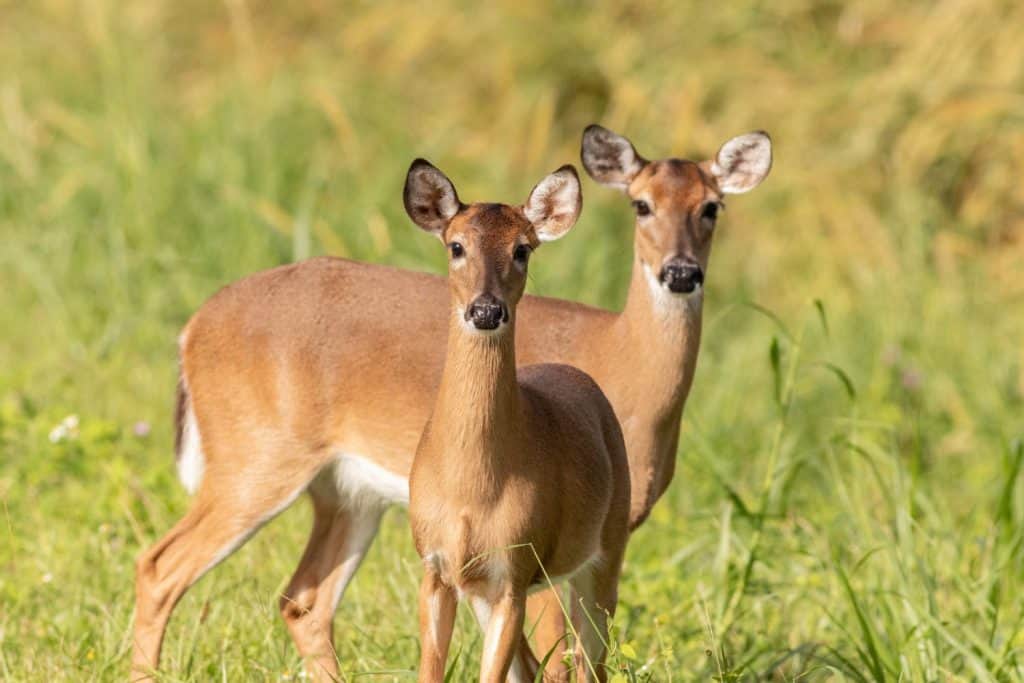
White-tailed deer are abundant in Ohio, and many call Hocking Hills their home.
©Omar F Martinez/Shutterstock.com
Hikers are far more likely to see white-tailed deer during their treks than a predatory animal. This species is established throughout North America, with a healthy population in Hocking Hills State Park. White-tailed deer are active all hours of the day, but more so during dawn and dusk. You can find them foraging in the park’s woodlands, and can sometimes see them on the sides of less-populated trails. These deer are so numerous in Ohio that residents often encounter them in their own backyards.
Foxes
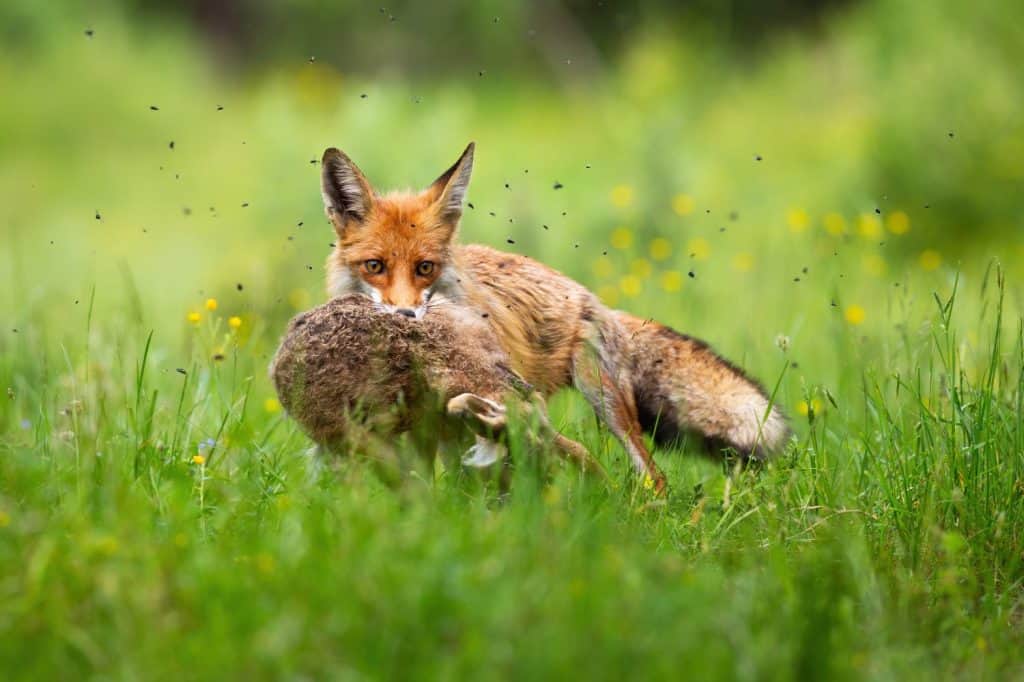
Red foxes prey on small mammals and rodents, but are also skilled scavengers.
©WildMedia/Shutterstock.com
Ohio is home to two species of fox. Both the red and gray foxes inhabit its woodlands and meadows. Visitors to Hocking Hills State Park are far more likely to see the red fox. Since they’re primarily active at dawn, dusk, and throughout the night, campers have a better chance of seeing them than hikers do. Gray foxes go out of their way to avoid humans and are incredibly elusive. Red foxes also avoid human interaction, but are seen more often due to their curious nature. At night, visitors are more likely to hear the screaming of a fox before seeing one in their path.
Bats
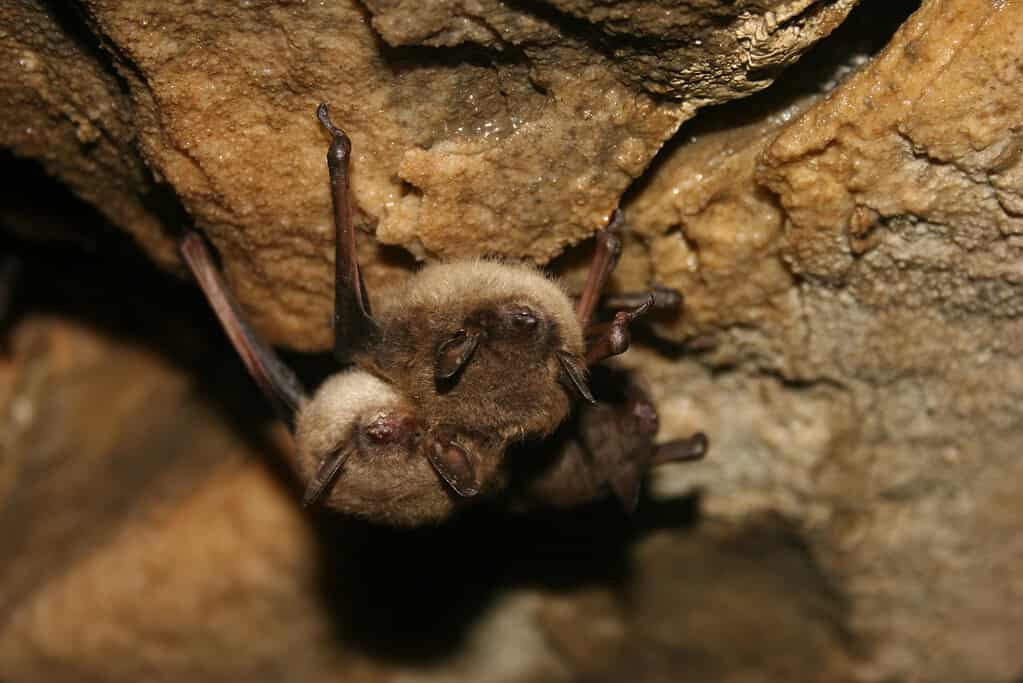
Many brown bats prefer the shelter of the caves in Hocking Hills State Park.
©U.S. Fish and Wildlife Service Headquarters / Public domain – Original / License
Ohio is home to 11 regularly occurring species of bats, although 13 native and vagrant species have been recorded. These include:
- Big Brown Bat (Eptesicus fuscus)
- Little Brown Bat (Myotis lucifugus)
- Tri-colored bat (Perimyotis subflavus)
- Indiana Bat (Myotis sodalis)
- Silver-haired Bat (Lasionycteris noctivagans)
- Eastern Red Bat (Lasiurus borealis)
- Hoary Bat (Lasiurus cinereus)
- Eastern Small-footed bat (Myotis leibii)
- Evening Bat (Nycticeius humeralis)
- Northern Myotis (Myotis septentrionalis)
- Gray Bat (Myotis grisescens)
- Rafinesque’s Big-eared bat (Corynorhinus rafinesquii)
- Mexican Free-tailed Bat (Tadarida brasiliensis)
Since bats are a nocturnal species, visitors would need to visit the park after dark to observe them. Despite their elusive nature, they are an essential part of the park’s ecosystem. Each one preys on pests, helping to keep specific insect populations in check.
Timber Rattlesnake
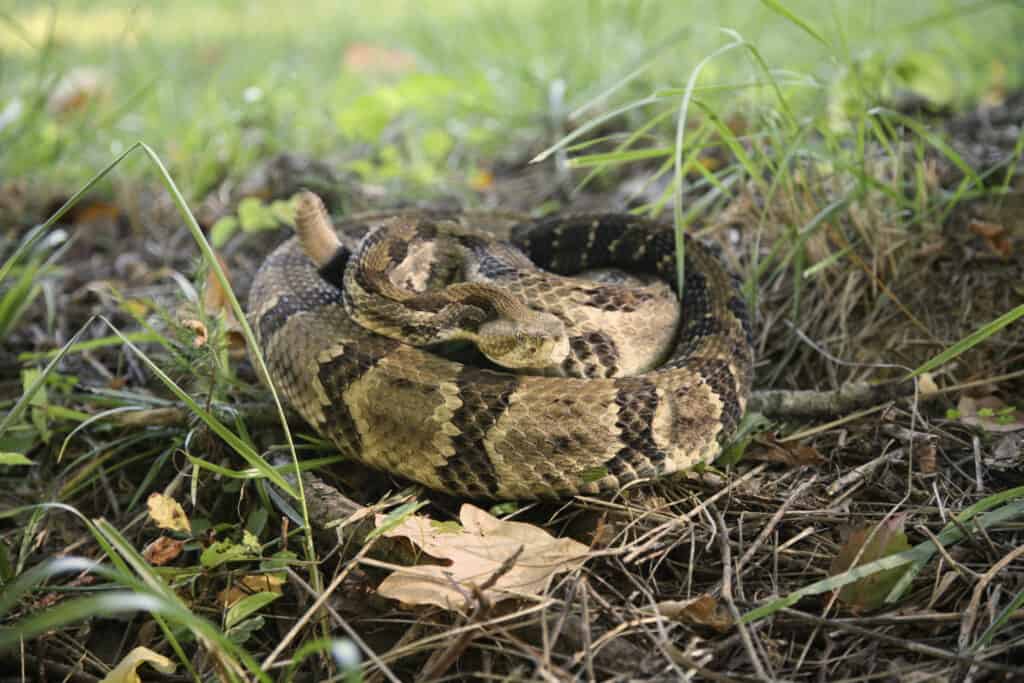
Timber Rattlesnakes are highly venomous, but they are not typically aggressive.
©iStock.com/NajaShots
The timber rattlesnake is considered Endangered in the state of Ohio. While many people fear this snake, hikers are unlikely to encounter one in Hocking Hills State Park. That doesn’t mean they don’t inhabit the park, but they are a rare and elusive species. Those visiting the park’s dense forests have a higher chance of encountering one. Timber rattlesnakes prefer to hide in crevices, underneath rocks, or around thick underbrush. Therefore, it’s also imperative for hikers to be wary when using trails that go through dense foliage. Sadly, the status of these snakes also affects the park’s ecosystem. Timber rattlesnakes control prey that can spread diseases, which is beneficial to the natural food chain.
Copperhead
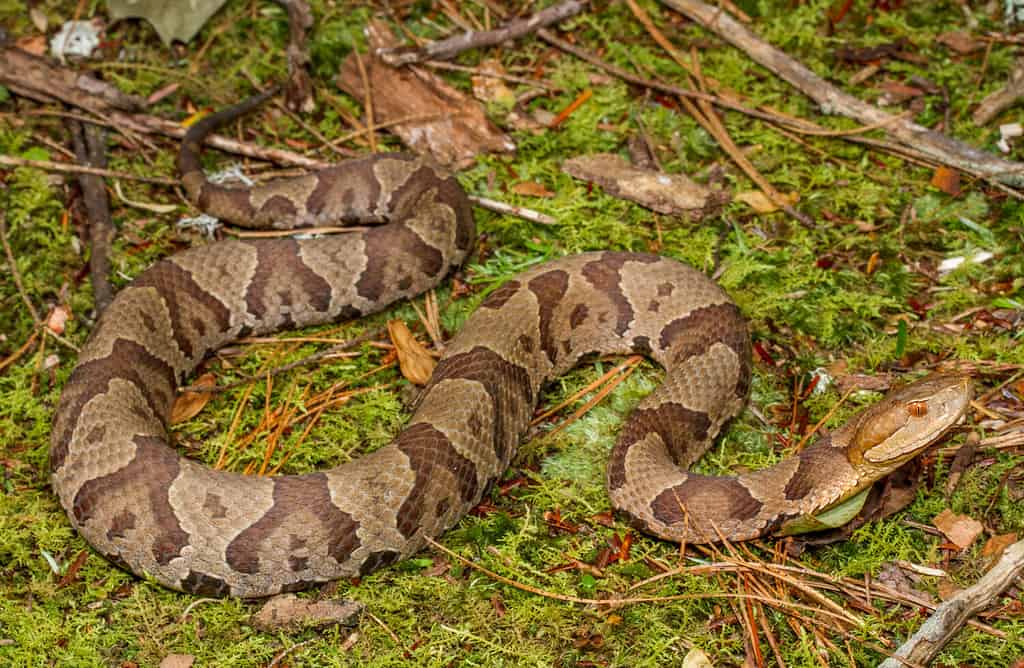
Copperhead Snakes possess some incredible camouflage that makes them seem almost invisible on the forest floor.
©JacobLoyacano/Shutterstock.com
The copperhead snake inhabits the southeastern parts of Ohio, which includes Hocking Hills State Park. While this species is also elusive, it doesn’t mean hikers won’t find them on trails. Copperheads are known for having exceptional camouflage, especially among dried underbrush. This not only makes them tough to spot, but also leads to accidental bites if a hiker isn’t careful. Their bite is unpleasant, and visitors should exercise caution when hiking in the park’s rocky, wooded areas.
Turtles

Woodland box turtles are known for their preference for forests over lakes or ponds.
©JasonYoder/Shutterstock.com
The Eastern box turtle, also known as the woodland box turtle, is native to the forests of Hocking Hills State Park. This fascinating species is terrestrial, which means it prefers to be primarily on land rather than in the water. This differs from most semi-aquatic species, especially common turtles. This also means that hikers have a good chance of observing the woodland box turtle on their hikes. Visitors should be cautious when hiking on trails that pass through the woods. Woodland box turtles also shelter under fallen logs when it’s hot out, so be careful of where you sit!
Birds
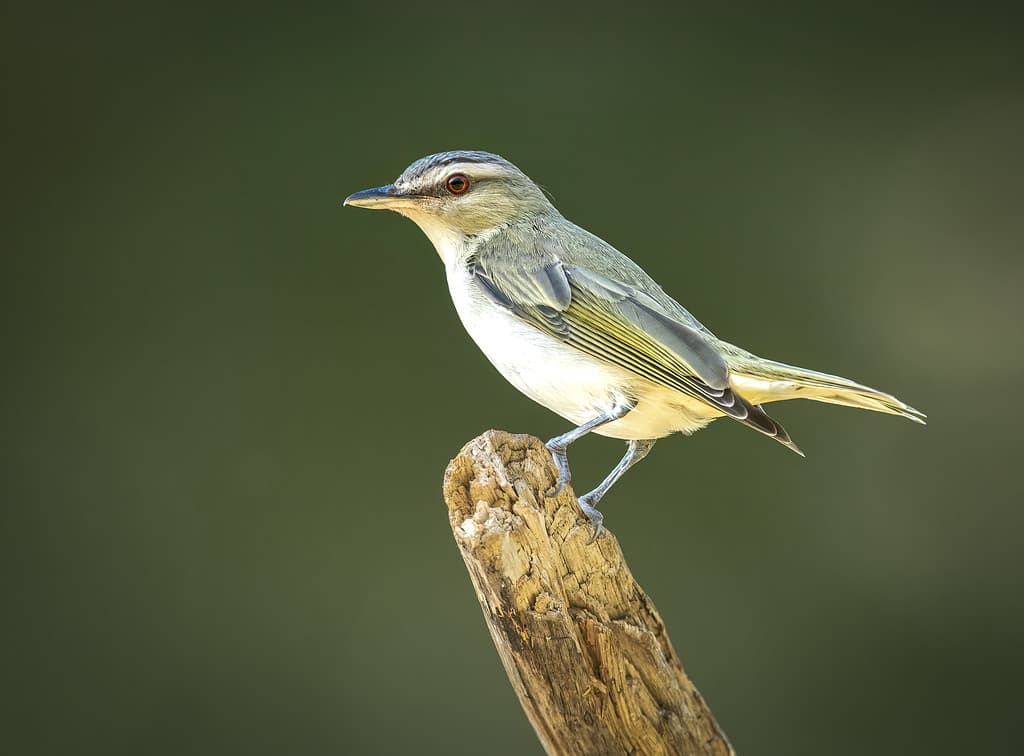
Red-eyed vireos are loud songbirds in Hocking Hills and are quick to take flight if disturbed.
©Irving A Gaffney/iStock via Getty Images
Hocking Hills State Park is a haven for avid birdwatchers. The park has several locations that are great for birding, according to Chalets at Hocking Hill, including:
- Cantwell Cliffs
- Rock House
- Conkles Hollow
- Old Man’s Cave
- Cedar Falls
- Ash Cave
Cantwell Cliffs is a popular spot for observing raptors, as well as some of the park’s more common bird species. Rock House is home to some lesser-sighted birds, including turkey vultures and hawks. For songbirds, such as vireos, warblers, bluebirds, chickadees, goldfinch, swallows, and starlings, Conkles Hollow and Old Man’s Cave are great places to start. And lastly, Cedar Falls and Ash Cave offer a bit of everything. There, visitors can observe dark-eyed juncos, sparrows, turkey vultures, the tufted titmouse, hawks, thrushes, warblers, and siskins.
Fish and Amphibians
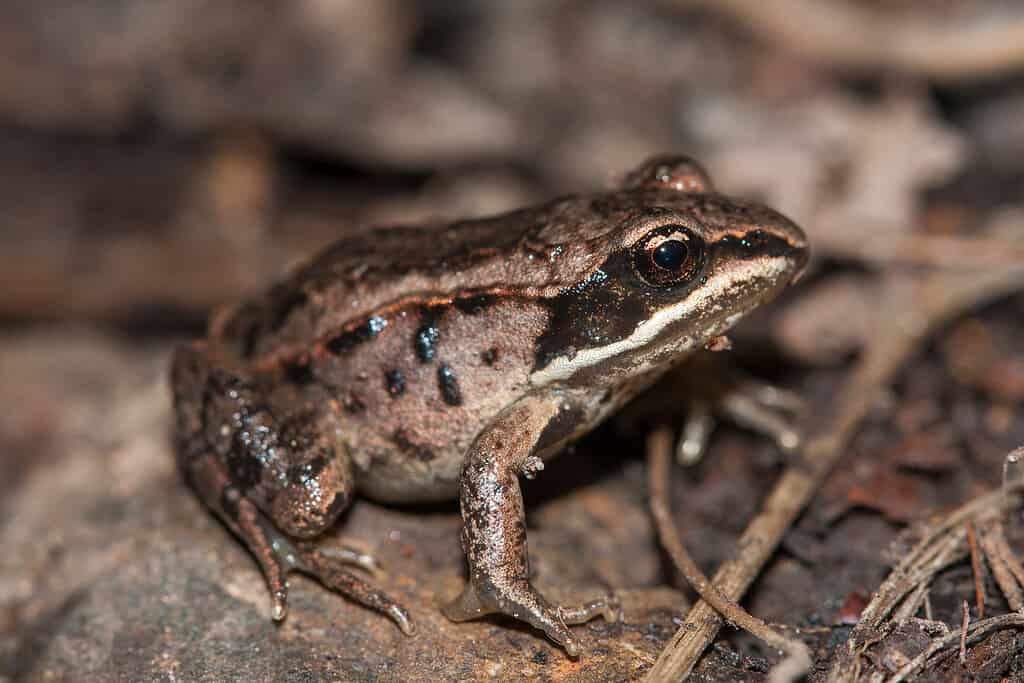
Wood frogs are vocal, but are also masters of camouflage in murky water.
©Viktor Loki/Shutterstock.com
Those visiting Hocking Hills State Park to fish will be pleased to know it’s home to a healthy fish population. Anglers can catch anything from channel catfish to small and largemouth bass. White crappies, quillbacks, bluegills, rainbow trouts, and saugeyes also inhabit the park’s waterways. The three best places to find these fish are Rose Lake, Lake Logan, and the Hocking River. The latter two are especially well-known for their healthy population of bass and catfish.
While visitors are fishing, they may also hear some of the park’s resident frog species. Hocking Hills State Park is home to several amphibious species, including:
- Green frog
- Wood frog
- Gray tree frog
- Cope’s gray tree frog
- Northern leopard frog
Toads also share the park’s lakes and rivers, including the American toad and Fowler’s toad. Their calls can be heard from spring through late summer.
The post A Complete Animal Guide to Ohio’s Hocking Hills State Park appeared first on A-Z Animals.
October 05, 2025 at 07:32PMLianna Tedesco
.jpeg)
.jpeg)

0 Comments